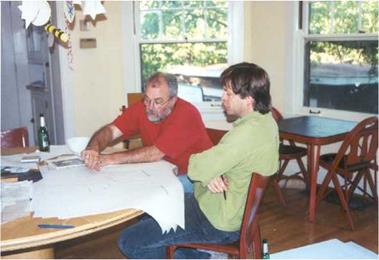One can approximate the probable cost of fabrication during design development, but it is impossible to accurately determine the cost of fabricating furniture until the construction drawings and specifications are complete. Ludwig Mies van der Rohe said, "God is in the details"16; he was right, but he neglected to add that "the Devil is in there, too." Details can significantly affect the cost of fabrication, which raises the question of why designers give fabricators their drawings after the contract documents are complete. It makes sense to work with fabricators as early as possible in the design process. Once the contract drawings are complete, a fabricator reviews and accurately determines how much it will cost and how long it will take to fabricate and install the proposed work. During this phase, the designer answers questions raised by the fabricator and organizes the process for submitting and receiving bids. If there are problems in fabricating the design, the fabricator discusses them ahead of time with the designer, who then works to resolve them, often in collaboration with the fabricator.
When the designer is not the fabricator, the most important thing the designer can do to promote the eventual success of the proposed work is to take an active role in determining the right fabricator for the job. A good fabricator can foresee problems in the design before fabrication occurs and work with the designer to resolve them and improve the design. A good fabricator will review the functional and technical aspects with the designer and work collaboratively to modify and improve the work whenever appropriate. Contract negotiation involves these considerations as well as determining the costs of fabrication. This phase requires communications and meetings with fabricators, artisans, and craftspeople. Managing the phase of pricing and contract negotiation consumes approximately 5 percent of the total time that designers spend on a project.17 The result determines the scope of work and the cost, establishes the responsibilities of various individuals, and outlines a schedule for completing and installing the proposed work (Figure 6.60).
 Figure 6.60 Michael Toombs and Jim Postell discussing the scope of work and expectations for fabrication—bid negoti ation phase. Photography, courtesy of Jim Postell, 2003.
Figure 6.60 Michael Toombs and Jim Postell discussing the scope of work and expectations for fabrication—bid negoti ation phase. Photography, courtesy of Jim Postell, 2003.



